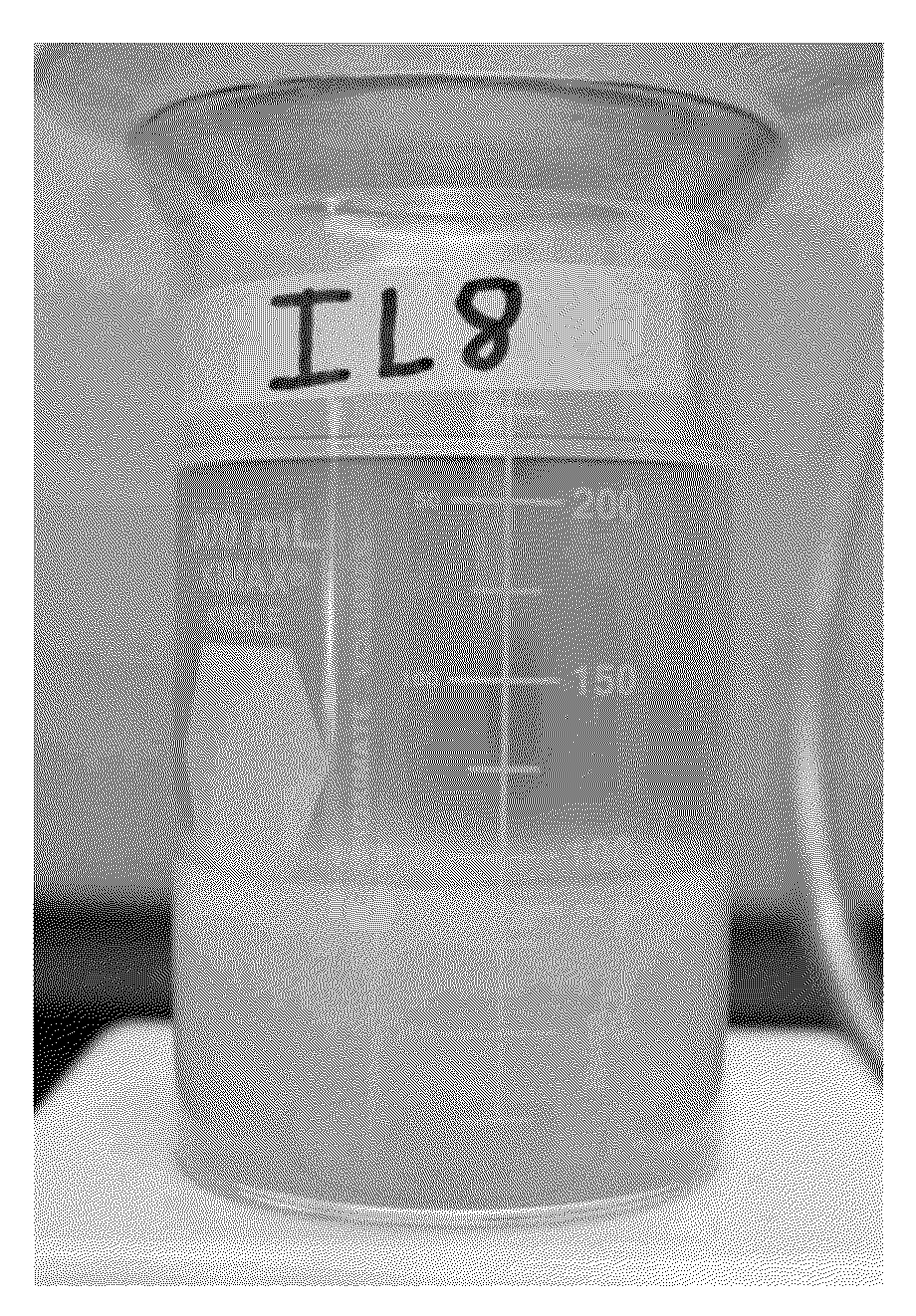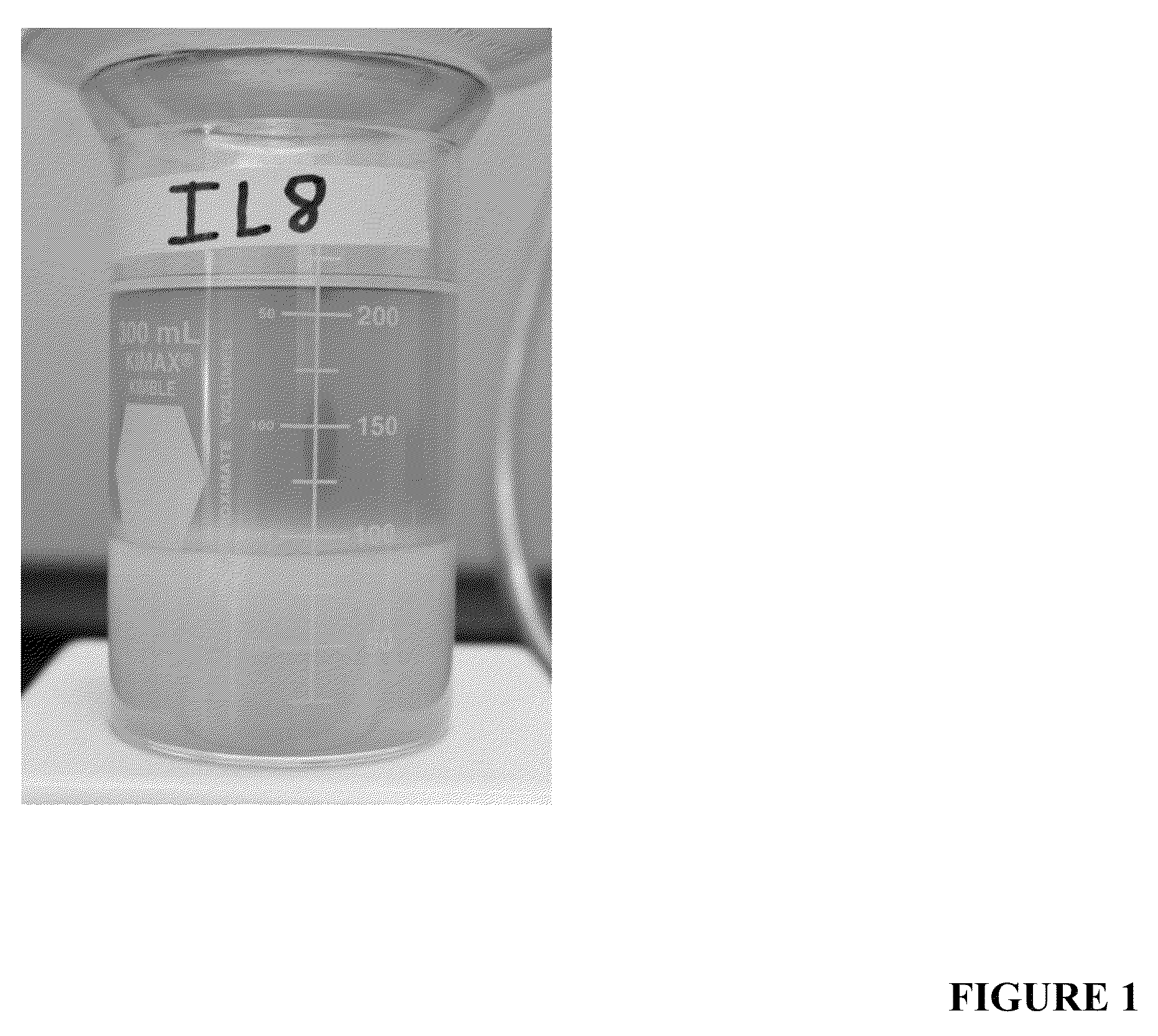Biodiesel glycerol emulsion fuel mixtures
a biodiesel glycerol and fuel mixture technology, applied in the direction of fuels, machines/engines, mechanical equipment, etc., can solve the problems of increasing fuel costs, poor fuel lubricity, and placing a greater operational demand on the end user, and achieves the effect of reducing engine wear and reducing carbon monoxide emissions
- Summary
- Abstract
- Description
- Claims
- Application Information
AI Technical Summary
Benefits of technology
Problems solved by technology
Method used
Image
Examples
example 1
Demonstration of an Emulsion Fuel with Biodiesel (B100) Base Fuel, 99% Pure Glycerol and a Surfactant System that is Resistant to Phase Separation for Extended Periods of Time
[0110]In a typical experiment, 50 mL of 99% pure glycerol was placed in a 300-mL wide-mouth beaker. The following components were then added to this beaker; 150 mL of 100% Biodiesel (B100) derived from food grade canola oil, 10 mL of distilled water, 0.5 mL sorbitan monooleate, 0.25 mL sorbitan trioleate, and 0.5 mL polyoxyethylenesorbitan monooleate. Using a handheld mixer, the fuel components were stirred for 60 seconds at approximately 1000 rpm. This mixing produced a macro-emulsion, where no free glycerol was observed. This intermediate macro-emulsion was then processed through a high pressure homogenizer. The resultant emulsified fuel was a light yellow in appearance with a viscosity of 7 cst. at 25 degrees Celsius. After standing undisturbed for 3 days at 25 degrees Celsius, settling was observed as shown...
example 2
Demonstration of an Emulsion Fuel with Biodiesel (B20) Base Fuel, 99% Pure Glycerol and a Surfactant System that is Resistant to Phase Separation for Extended Periods of Time
[0111]In a typical experiment, 375 mL of 99% pure glycerol was placed in a 2-L flask. The following components were then added to this flask: 650 mL of B20 comprised of 20% (vol / vol) biodiesel produced from waste vegetable oils and 80% (vol / vol) ultra-low sulfur diesel, 10 mL of distilled water, 3.25 mL sorbitan monooleate, 2.5 mL sorbitan trioleate, and 2.25 mL polyoxyethylenesorbitan monooleate. Using a handheld mixer, the fuel components were stirred for 90 seconds at approximately 1000 rpm. This produced a macro-emulsion, where no free glycerol was observed. This intermediate macro-emulsion was then processed through a high pressure homogenizer. The resultant emulsified fuel was a light orange cloudy mixture in appearance with a viscosity of 5.5 cst. and a density of 0.94 g mL−1 at 40 degrees Celsius. The re...
example 3
Demonstration of Emulsion Creation with Biodiesel (B50) Base Fuel, 99% Pure Glycerol and Surfactant System
[0117]In a typical experiment, 90 mL of 99% pure glycerol was placed in a 300-mL beaker. The following components were then added to this beaker; 175 mL of B50 biodiesel blend stock, consisting of 50% (vol / vol) waste vegetable oil derived biodiesel and 50 vol. % ultra-low sulfur diesel, 0.25 mL sorbitan monooleate, 0.5 mL sorbitan trioleate, and 0.50 mL polyoxyethylenesorbitan monooleate. Using a handheld mixer, the fuel components were stirred for 60 seconds at approximately 1000 rpm. This produced a macro-emulsion, where no free glycerol was observed. This intermediate macro-emulsion was then processed through a high pressure homogenizer. The resultant emulsified fuel was a light orange cloudy mixture in appearance (FIG. 6) with a viscosity of 40 cst. at 40 degrees Celsius. After standing undisturbed for 24 hours at 25 degrees Celsius, settling was observed in the fuel emulsio...
PUM
| Property | Measurement | Unit |
|---|---|---|
| diameters | aaaaa | aaaaa |
| boiling points | aaaaa | aaaaa |
| boiling points | aaaaa | aaaaa |
Abstract
Description
Claims
Application Information
 Login to View More
Login to View More - R&D Engineer
- R&D Manager
- IP Professional
- Industry Leading Data Capabilities
- Powerful AI technology
- Patent DNA Extraction
Browse by: Latest US Patents, China's latest patents, Technical Efficacy Thesaurus, Application Domain, Technology Topic, Popular Technical Reports.
© 2024 PatSnap. All rights reserved.Legal|Privacy policy|Modern Slavery Act Transparency Statement|Sitemap|About US| Contact US: help@patsnap.com










